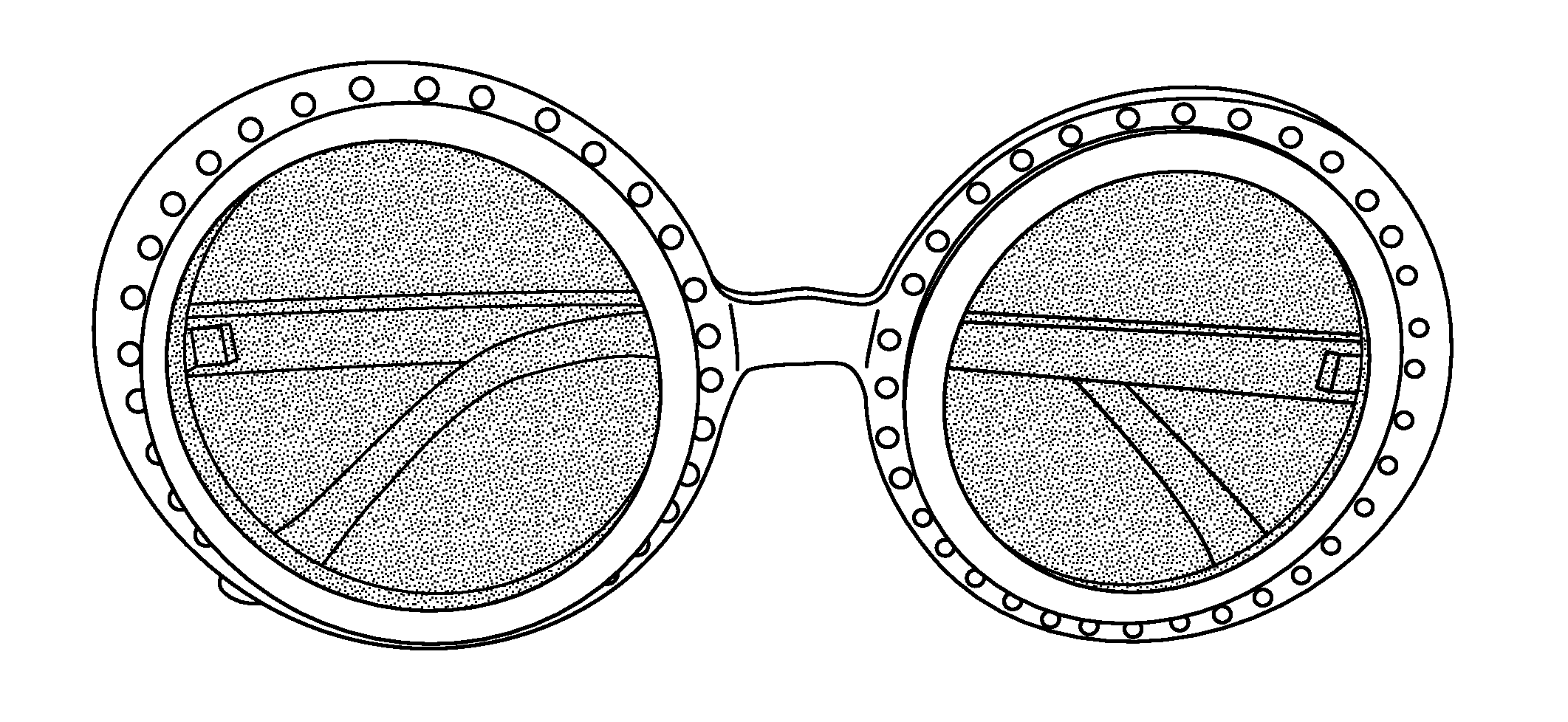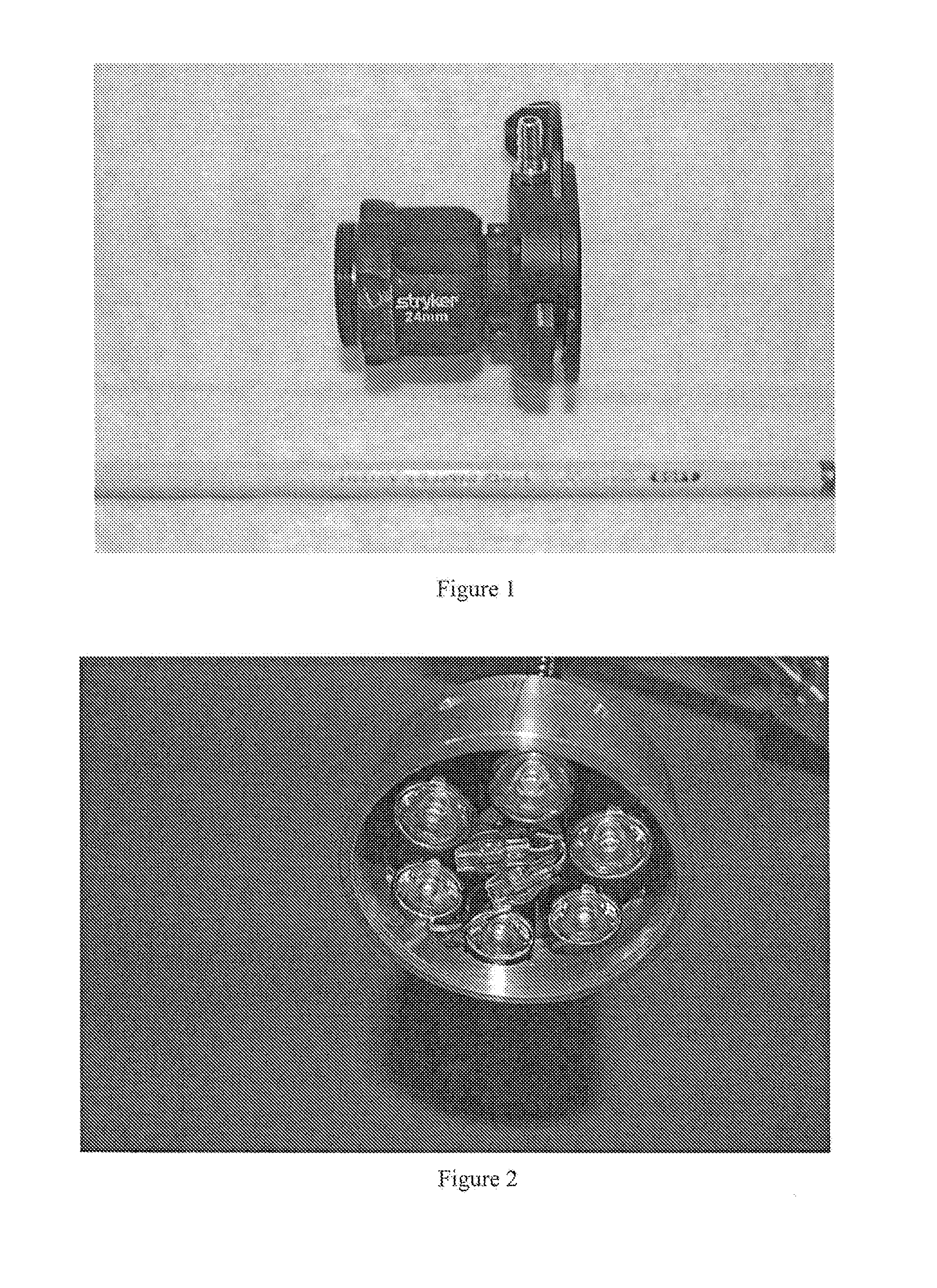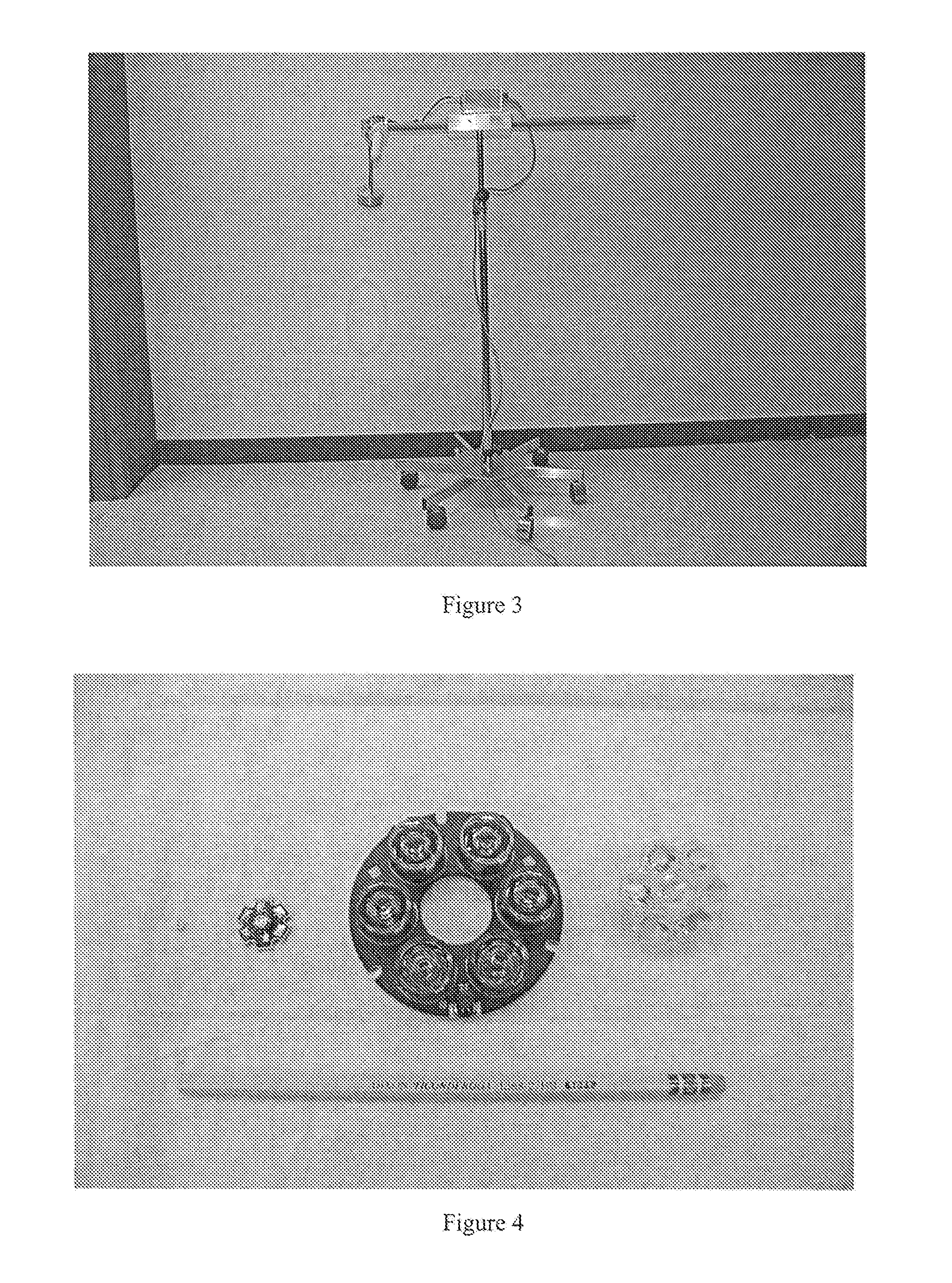Light-emitting dye for intraoperative imaging or sentinel lymph node biopsy
a technology of intraoperative imaging and light-emitting dye, which is applied in the field of fluorescent dyes, can solve the problems of difficult diagnosis, difficult dissection and sln identification, and difficult management of regional lymph nodes in patients with clinically localized primary melanomas
- Summary
- Abstract
- Description
- Claims
- Application Information
AI Technical Summary
Benefits of technology
Problems solved by technology
Method used
Image
Examples
example 1
Initial Studies
[0108]Illumination devices are based upon high intensity blue light-emitting diodes (LEDs) and emit an intense band of light that is centered at 480 nm and has a half-height bandwidth of about 90 nm. The half-height bandwidth is narrowed to about 70 nm with truncation of a higher-wavelength tail by placing a Wratten #47 filter in front of the focusing and collimating lens of the illuminator housing. The blue light emitted by this configuration is ideally suited for the transdermal excitation of fluorescein and can be effectively blocked by specially-selected yellow-orange lenses that can be mounted in photographic filter holders for photographic documentation purposes or in eyeglass frames for wear by the surgeon or the user.
[0109]A holographic notch filter (Kaiser Optical) to remove the intense, but spectrally narrow band of blue light from the LED light sources, was fitted into a surgical telescope camera adapter. The camera adapter design used by Stryker Endoscopy ...
example 2
Materials and Methods
[0113]Fluorescein: 10% Fluorescein USP (Mallinckrodt Baker, Inc., Phillipsburg, N.J.) was diluted in normal saline to concentrations of 0.001%, 0.01%, and 0.1%. The diluted fluorescein was injected (0.5-1.0 ml) into the dermis of the distal forelimb and hindlimb of swine using a 1.0 ml tuberculin syringe. The dose and number of dermal injections varied according to the result. Sometimes the first injection illuminated a large lymphatic trunk easily visible through the skin. This happened more often in the hindlimb than the forelimb. Occasionally, several injections were needed to illuminate a channel. And sometimes, no lymphatic channel filled from the dermal injection. This happened in forelimbs only. Most often, after less than three injections, a lymphatic channel drained from the limb to nodes as seen through the skin and led to the nodal basin containing the sentinel node. In this model, the sentinel nodes were not visible through the skin. An open surgical...
example 3
Lymphatic Mapping
[0116]A total of five swine were studied utilizing all four limbs; the total number of lymphatic nodal basins evaluated was 20. Of the ten fluorescein hindlimb injections, nine (90%) showed lymphatic trunks under the skin leading to the SLN. In the forelimbs available for study, seven fluorescein injections were performed and only one (14%) developed visible fluorescence leading to a SLN. Because of the poor visualization of lymphatic trunks with fluorescein in the forelimbs of swine, we stopped injecting forelimbs in the last animals studied. In the forelimbs, lymphazurin was injected four times and failed to lead to a SLN. We feel that the forelimb lymphatic drainage in the swine may lead to the deep lymphatics more often than the superficial ones as is seen reliably in the swine hindlimb (Wallace, et al. “Lymphoseek: a molecular imaging agent for melanoma sentinel lymph node mapping.” Annals of Surgical Oncology (2007) 14(2):913-21.).
[0117]Injection method: We fo...
PUM
 Login to View More
Login to View More Abstract
Description
Claims
Application Information
 Login to View More
Login to View More - R&D
- Intellectual Property
- Life Sciences
- Materials
- Tech Scout
- Unparalleled Data Quality
- Higher Quality Content
- 60% Fewer Hallucinations
Browse by: Latest US Patents, China's latest patents, Technical Efficacy Thesaurus, Application Domain, Technology Topic, Popular Technical Reports.
© 2025 PatSnap. All rights reserved.Legal|Privacy policy|Modern Slavery Act Transparency Statement|Sitemap|About US| Contact US: help@patsnap.com



